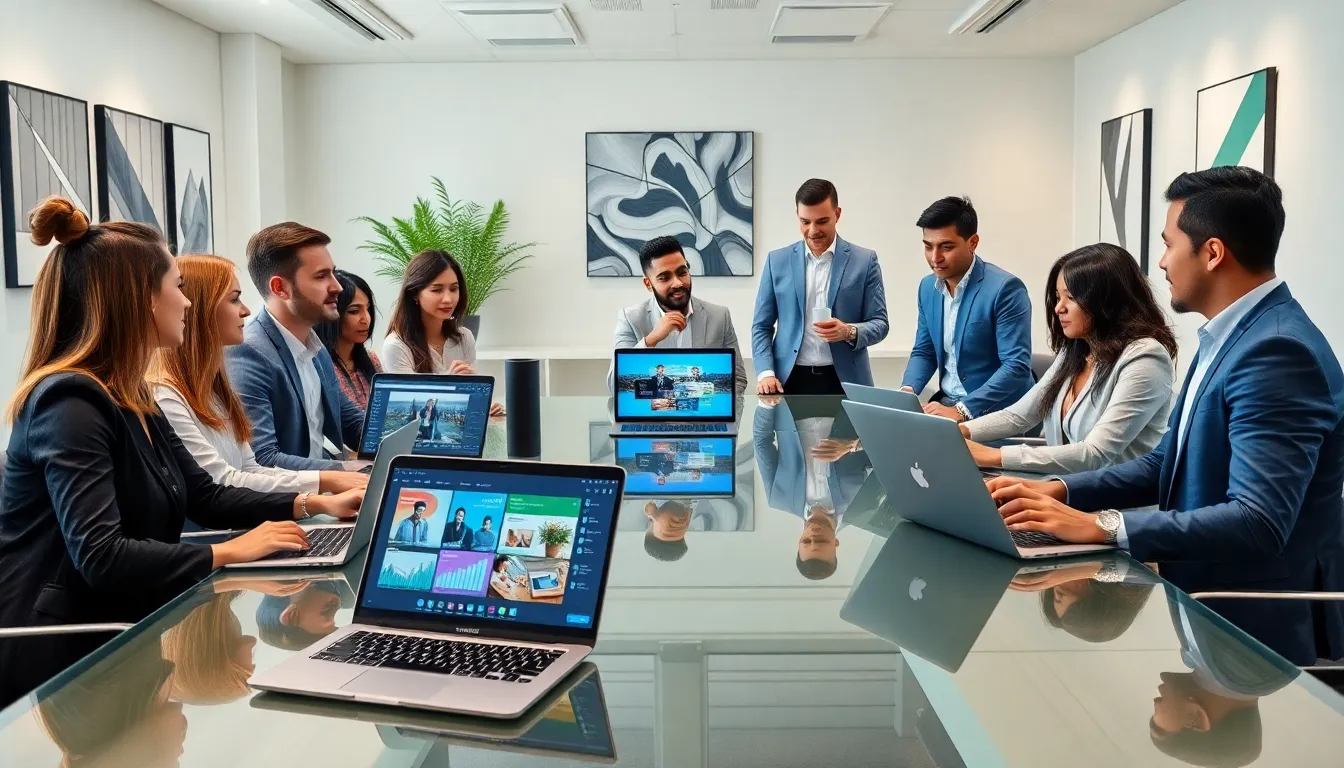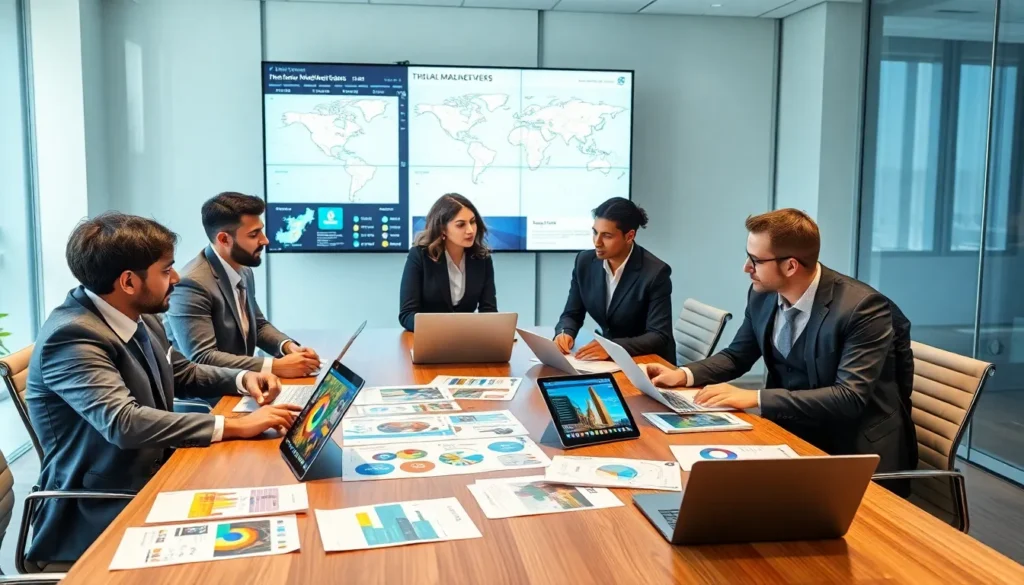In a world where our faces are buried in screens more often than not, the demand for rich multimedia content has skyrocketed. It’s like if a pizza delivery guy also delivered wisdom, humor, and instant gratification right to your doorstep. From eye-catching images and captivating videos to breaking news, convenient maps, and those irresistible shopping deals, multimedia is the lifeblood of modern information consumption. So, grab your digital snack as we jump into the kaleidoscopic world of multimedia and discover how it enhances our interactions with the internet. Why settle for reading plain text when you can have it all?
Allimagesvideosnewsmapsshoppingbooksflights

Today, multimedia is more than just a buzzword: it’s a necessity. In an age where attention spans flutter like moths to the flame, engaging content is crucial to keeping users fascinated. Studies have shown that people are 65% more likely to remember information if it’s presented alongside relevant imagery. Without multimedia, content can feel flat and uninspired. In contrast, a well-crafted combination of text, visuals, and audio ignites curiosity, makes complex ideas digestible, and enhances the overall message. This is especially significant in business scenarios, where a dynamic presentation can make a difference in achieving objectives and fostering connections. The stakes are high, and the role of multimedia is pivotal.
Diverse Content Types: A Breakdown
Multimedia encompasses a variety of content types that cater to different audience preferences. Let’s break it down:
Images
From stunning photography to infographics, images can convey a thousand words, making complex data easier to understand and engage with.
Videos
Videos are the kings of multimedia. They can entertain, educate, and even persuade. Whether it’s a tutorial or a promotional campaign, videos often command attention like nothing else.
News
Integrating multimedia into news keeps the narratives vibrant and engaging. With embedded videos or interactive maps, news becomes more than just news: it transforms into a comprehensive experience.
Maps
Interactive maps provide invaluable insights into geographical data, local events, and understandings of context. For travelers and researchers alike, they add depth to their information search.
Shopping
Visual product showcases and customer reviews combine to create an engaging shopping experience, from e-commerce websites to social media platforms.
Books
Digital books enhance the reading experience with rich media. Readers can interact with content through audio, videos, and hyperlinks, resulting in a more immersive adventure.
The Role of Multimedia in Information Gathering
When it comes to gathering information, multimedia shines brightly. In countless studies, individuals who consume information through multiple types of media are found to have a deeper understanding of the topic. This is largely due to the brain’s ability to engage with different senses. Imagery can cement ideas, while audio can provide context, creating a well-rounded learning environment.
For example, a student researching climate change may find an infographic that succinctly summarizes statistics, a video that profiles global activists, and an interactive map showing affected areas. This mixture of media not only enriches the learning experience but also encourages critical thinking and informed conclusions.
Enhancing User Experience Through Multimedia
Imagine clicking on a website and being greeted by bland text and a single picture that looks like an awkward family snapshot. Not an ideal scenario, right? In contrast, a well-designed layout featuring vibrant colors, dynamic videos, and lively animations can draw users in and keep them engaged. Multimedia enhances navigation and breaks the monotony of text-heavy content, leading to longer dwell times and reduced bounce rates.
Also, interactive elements like quizzes, polls, or slideshows empower users to take control of their digital experience. Not only are they more inclined to explore different sections of a website, but they also leave feeling satisfied, informed, and eager to return. The enhancement of user experience is not just aspirational: it’s essential for brands looking to build lasting relationships with their audience.
SEO Strategies for Multimedia Content
SEO isn’t just about keywords anymore: it’s about creating a multifaceted experience for users. Search engines reward content that includes a variety of media types. Here are some key strategies to consider:
- Optimize Alt Text for Images: Alt text helps search engines understand images while providing context for users with visual impairments.
- Use Transcripts for Videos: Including transcripts not only improves accessibility but also enriches text-based content for SEO.
- Embed Relevant Multimedia: Creating value through multimedia can increase the time spent on your page, which search engines notice.
- Leverage Rich Snippets: Utilizing schema markup allows content to stand out on search results, potentially increasing click-through rates.
- Create Shareable Graphics and Videos: Content that resonates is shared more frequently, amplifying your reach and visibility.
Integrating these strategies can propel multimedia content up the search results ladder, leading to greater visibility and engagement.
Future Trends in Multimedia Consumption
As technology continues to evolve, so does the landscape of multimedia consumption. It’s not just about having multimedia: it’s about how it’s delivered. Upcoming trends include:
- Augmented and Virtual Reality: These technologies promise immersive experiences that blur the lines between reality and digital content. Brands that embrace these developments early may enjoy a significant competitive advantage.
- Personalization: Data-driven insights will shape how multimedia is presented. Expect recommendations based on user behavior, preferences, and demographics.
- Interactive Storytelling: Moving beyond static content, brands will allow audiences to engage with narratives, making choices that impact outcomes.
- Voice Search: With more consumers utilizing intelligent assistants, multimedia content tailored for voice search will be essential.
The multimedia landscape is changing, and those who adapt will thrive. Staying ahead of the curve will enable brands to meet growing consumer expectations and enhance engagement.


More Stories
Kjayde68: The Rising Star of Online Content Creation
Tnyjlsv: Unraveling Its Secrets and Significance
Sattamatakakalyanrisult: Unlocking Its Significance and Definition